Light rail excursion around Frankfurt, 20 March 2010 - part 1
Hello all!
As promised, here is the first load of images from the excursion I've been on this past Saturday ![]() . The event took place to celebrate the 30th anniversary of one of the LRV types on the light rail network - or underground, if you will - in Frankfurt. A rather extensive Wikipedia article in German can be found here: Click. The event was organized by Frankfurt's Historic Tram Association (Click) where some of my friends are members - and therefore the excursion was as much a gathering of friends as a very interesting and delightful event for rail enthusiasts.
. The event took place to celebrate the 30th anniversary of one of the LRV types on the light rail network - or underground, if you will - in Frankfurt. A rather extensive Wikipedia article in German can be found here: Click. The event was organized by Frankfurt's Historic Tram Association (Click) where some of my friends are members - and therefore the excursion was as much a gathering of friends as a very interesting and delightful event for rail enthusiasts.
To give a very brief summary of the history of Frankfurt's light rail network: Back in the 1960s and in keeping with widespread beliefs of the time, plans were made to convert the majority of the original tram network to light rail operation, with this evolved network being meant to have its own right of way wherever possible, so as to avoid interference with road traffic. Long term plans called for all trunk lines within the city to be operated in tunnels, which but proved to be so costly that several stretches - especially along the U1 through U3 lines as well as the U5 - have remained stuck in what were meant to be interim levels of construction for decades.
There are five types of LRVs currently operated on the network: The Siemens-Düwag U2 type, also used in Calgary, Edmonton and San Diego; the U3 type (article in German only) which is the one having its anniversary this year; the U4 type (German only); the U5 type (German only) from Bombardier, which is the most recent generation; and the Ptb type (German only) originally designed to be capable of operating both as tram and underground and thus meant to pave the way for the transition from one system to another. The entire network is operated by the VGF (Verkehrsgesellschaft Frankfurt; Frankfurt Transport Authority) which evolved from the city's Department of Public Services in 1996.
Our trip was scheduled to begin at 10 o'clock at the Schäfflestraße station, just outside the VGF's East depot in the borough of Seckbach, which was opened only in 2003 and serves the light rail lines U4, U5, U6 and U7 as well as tram lines 12 and 14. All in all, about 39 guests went on this excursion. Our train for the trip consisted of cars 457 and 476.
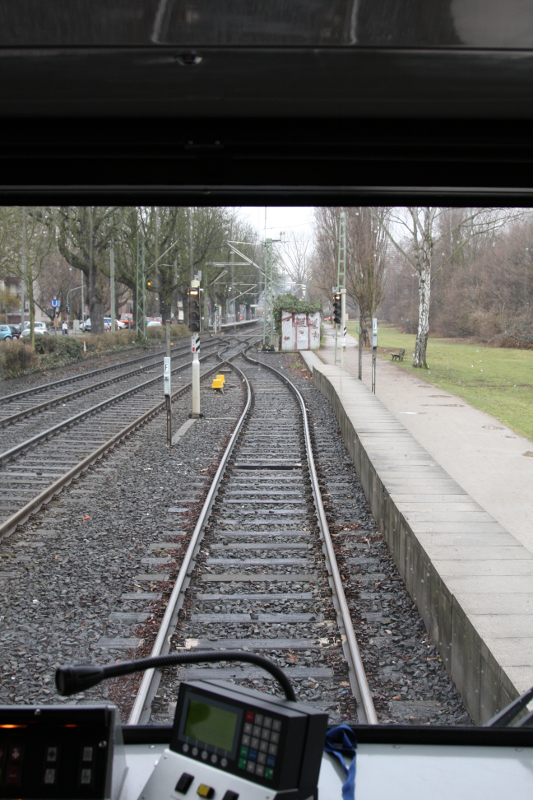
There is a turnback siding at Schäfflestraße which was where we were permitted to board. The tracks to the left are the line to Enkheim, originally operated only by the U7 line since 1992. In December 2008, then, the U4 line which previously terminated at Seckbacher Landstraße was extended to Enkheim as well, actually passing through the East depot. Depending on the time of day, every second or third train on the U4 line continues past Seckbacher Landstraße.
All following images showing this perspective were made through the open cab door.
The first leg of the trip took us to Hausen, which is normally served by the U7 line.
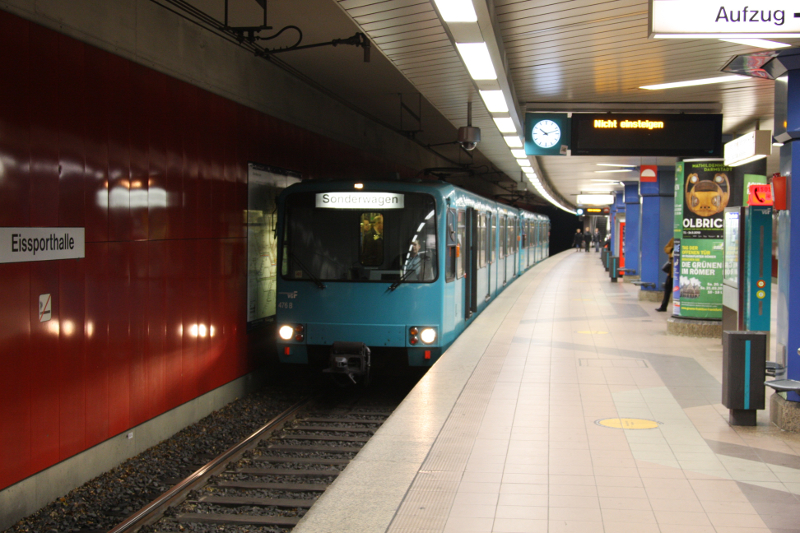
The first photo stop was at Eissporthalle, where the city's ice hockey stadium is located. This here is called the "C" route, the first section of which - between Industriehof in the west and Zoo in the east - was opened in October 1986. The extension to Enkheim followed in 1992, and the one from Zoo to Eastern Station in 1999.
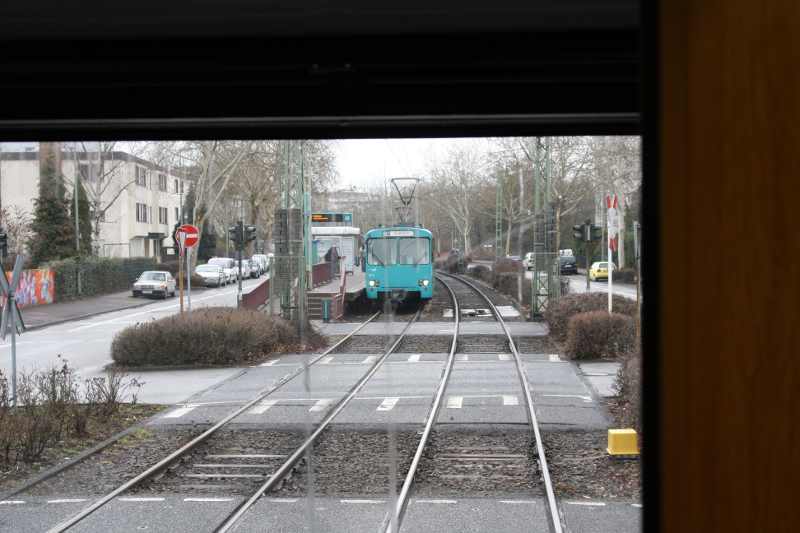
Having crossed the city and turned onto the Hausen branch at Industriehof, we were now waiting at Große Nelkenstraße. The platforms at this stop are located to both sides of the intersection. On the opposite track, a U7 service bound for Enkheim is picking up passengers.
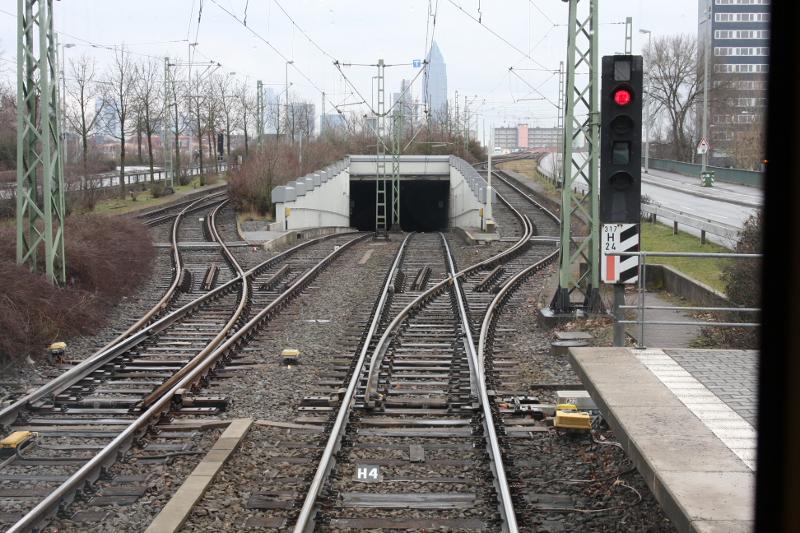
After a brief layover at Hausen our schedule called for us returning to Bockenheimer Warte, which we did. This here is Industriehof again, with the tunnel being visible in front of the train. The junction here dates back to the time when trains for the U6 and U7 lines were stored at the Gutleut depot near Central Station, a few kilometres away. To reach the "C" route, they actually had to travel a good part of what is now tram line 16, branching off at the intersection of Adalbertstraße and Schloßstraße and continuing across Breitenbachbrücke. Needless to say, this solution was less than ideal, which was one of the reasons why the East depot was eventually built. We would later travel this service route between Schloßstraße and Industriehof as well.
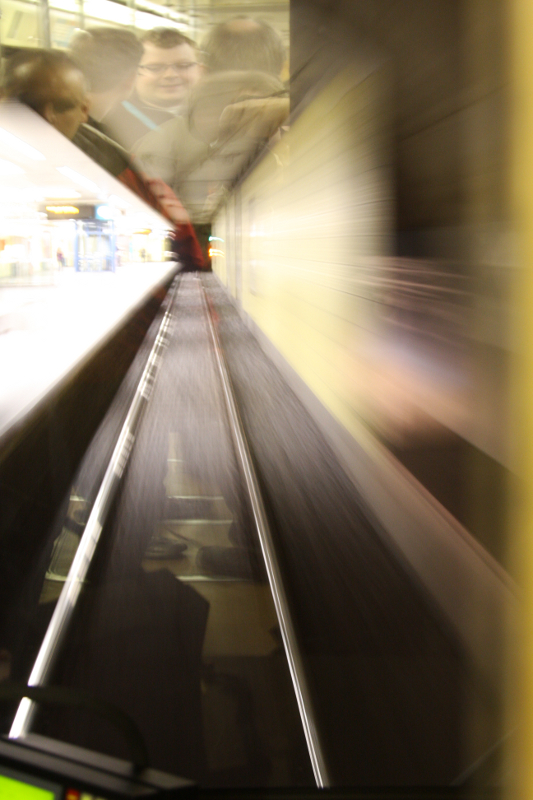
An effect shot of sorts inside the tunnel.
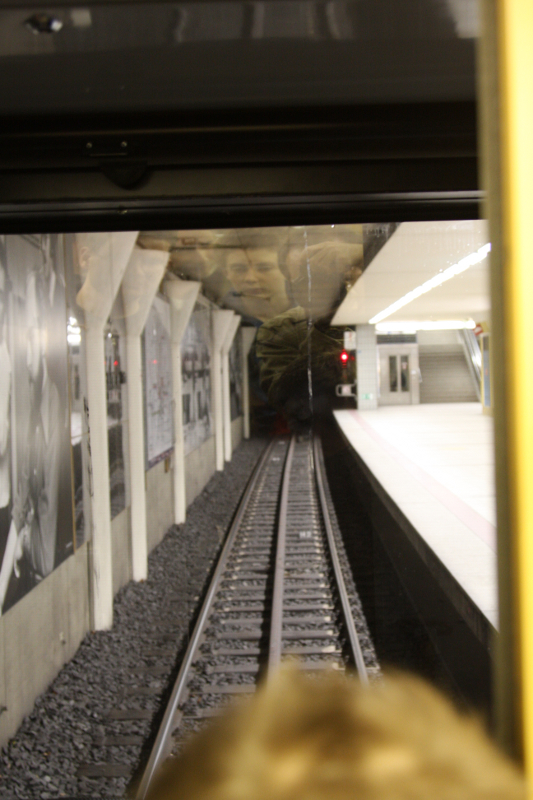
Bockenheimer Warte - the location of the old university campus which is to be abandoned over the next few years - is served by lines U4, U6 and U7. However, U4 and U6/U7 are operating on different routes, which but are connected by a service tunnel not used for regular passenger services. We would now use this connecting tunnel to change from the "C" route to the "D" route.
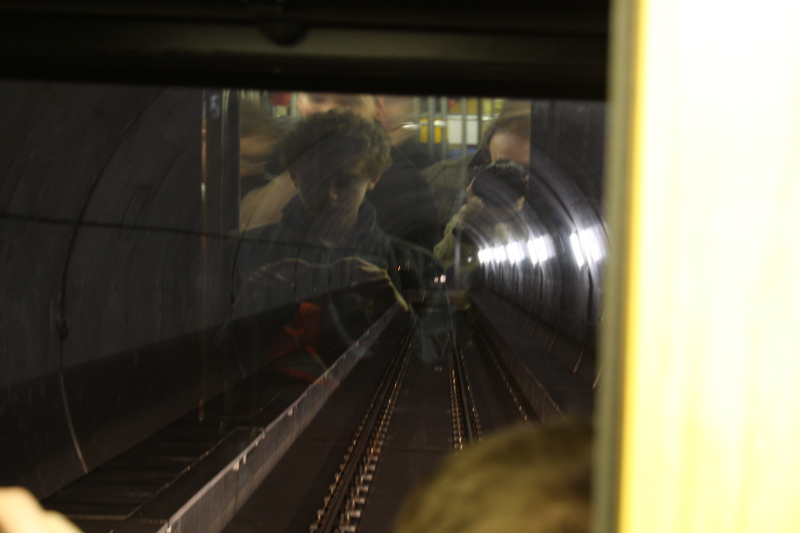
Inside the connecting tunnel...
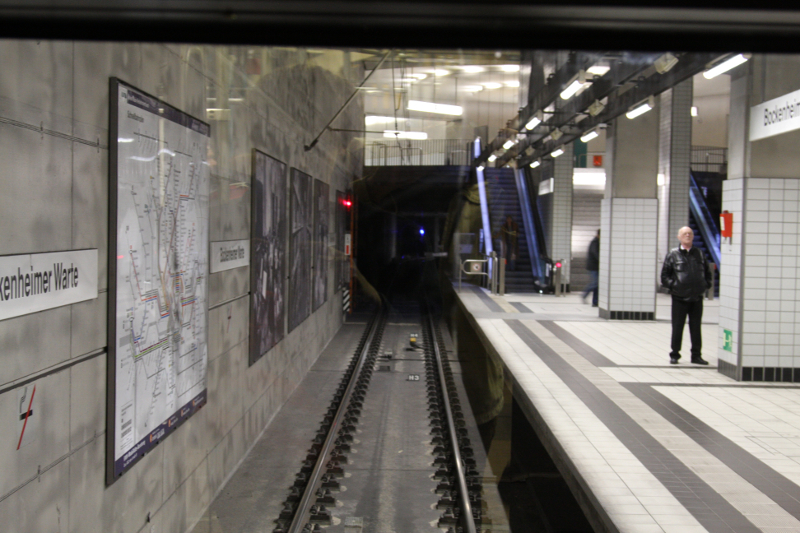
...and back on regular tracks at the "D" route part of Bockenheimer Warte Station. Next, we continued into the turnback area, which is located behind where I was looking in this photo.
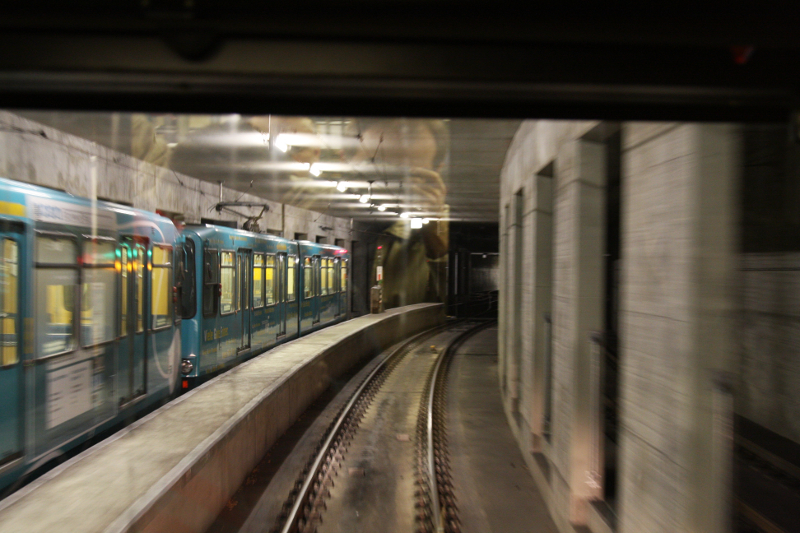
This is the turnback facility or "Wendeanlage" for the U4 line. The train on the left is a scheduled U4 service, also consisting of U3 type cars. These cars are used exclusively on the U4 line, so having them operate on the remainder of the network was what made this excursion special. You'll be seeing a couple of full external views of these cars soon ![]() .
.
The next leg would take us along the regular path for the U4 line up till Konstablerwache Station.
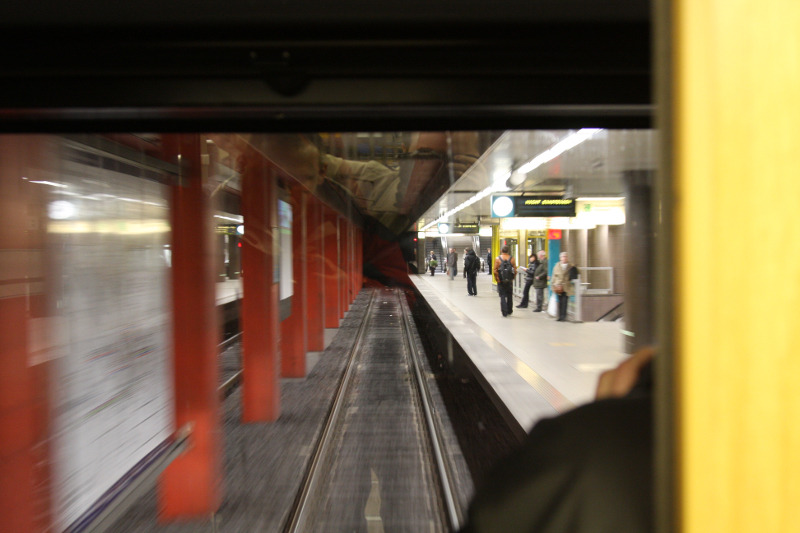
Needless to say, there were passengers at many of the stations we passed that day who confused us with scheduled services, in spite of us having displayed "Sonderwagen" ("Special") on the rollsigns! This here is Konstablerwache, by the way.
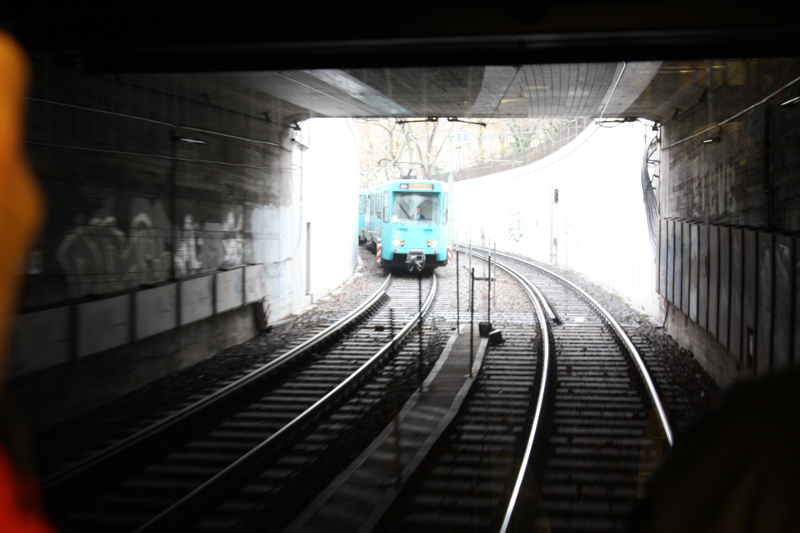
However, we now continued on what is called the "B" route, usually served by the U5 line and operating more or less like a tram for a good portion of the line. Here, we are egressing the tunnel at the intersection of Eschenheimer Anlage, Scheffelstraße and Eckenheimer Landstraße, also called the "Scheffeleck," while a U5 service to Central Station is heading the other way.
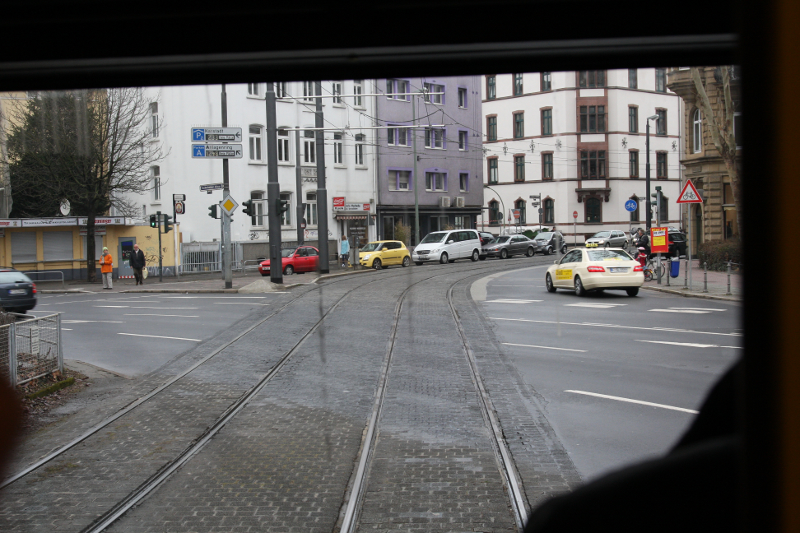
Back to the light of day...
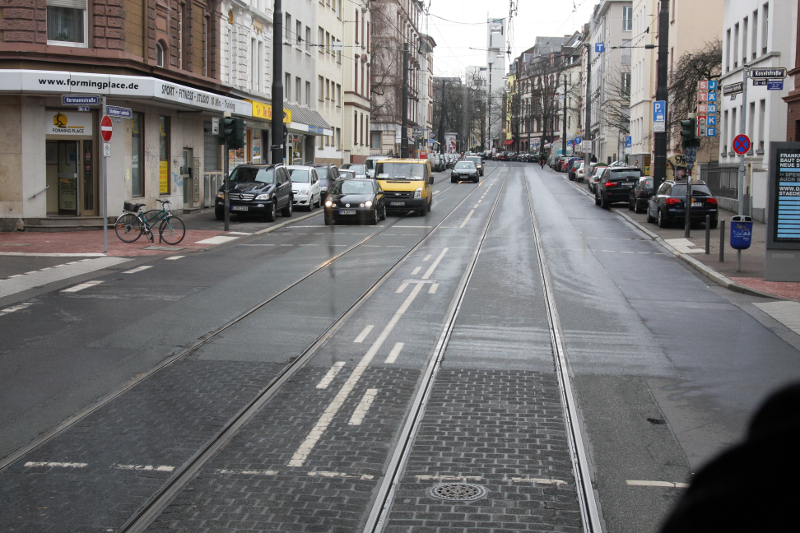
...and on our way north. Actually, trains for the U4 line did need to use this route at the beginning and the end of their shifts while they were stabled at the Eckenheim depot - before the days of the new East depot.
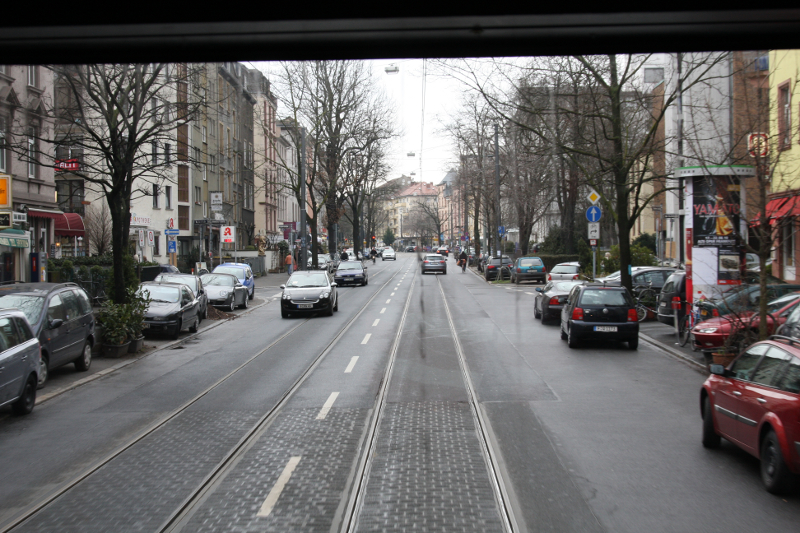
Under German regulations, light rail systems such as the one in Frankfurt are considered to be trams, and thus subject to such requirements as the cars having to be fitted with brake lights, direction indicators and electromagnetic rail brakes, plus both bell and horn.
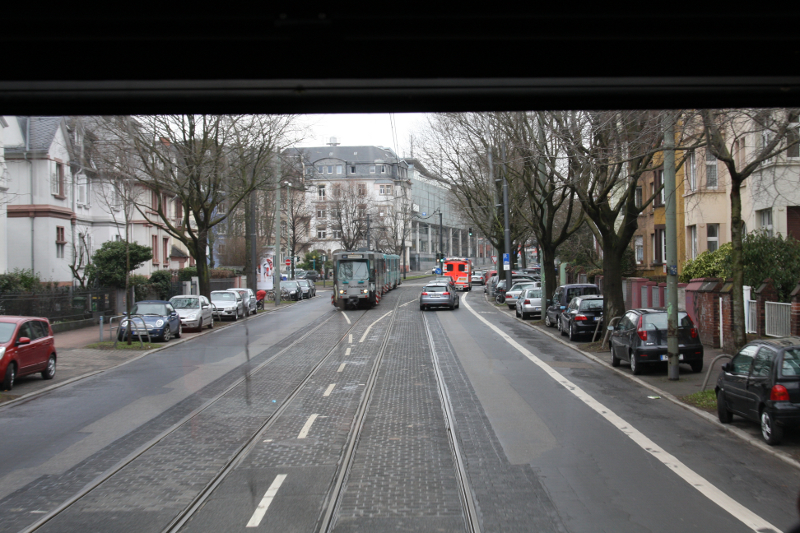
Another line U5 service heading down to Central Station. This line is operated with Ptb type cars in maximums of two cars per train as regulations do not allow for trains longer than 75 metres to be operating on shared right of way, with one Ptb car being 28.7 metres long.
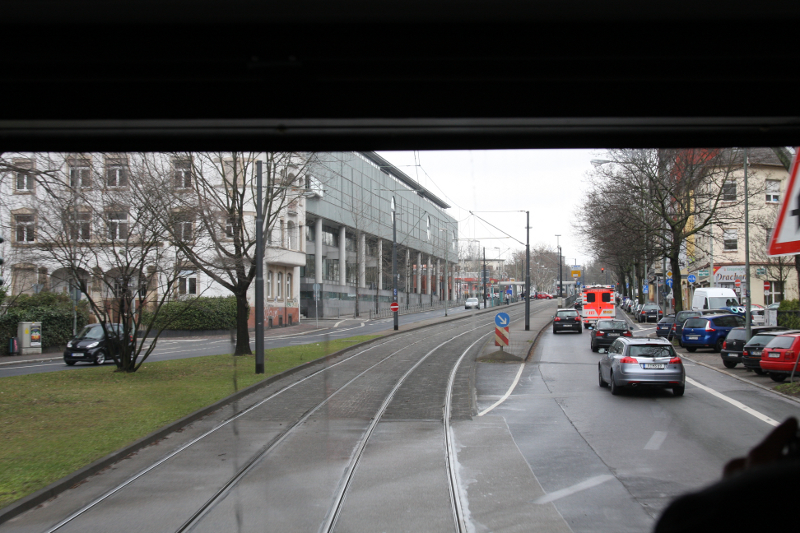
The large pillared building to the left is the Frankfurt branch of the German National Library.
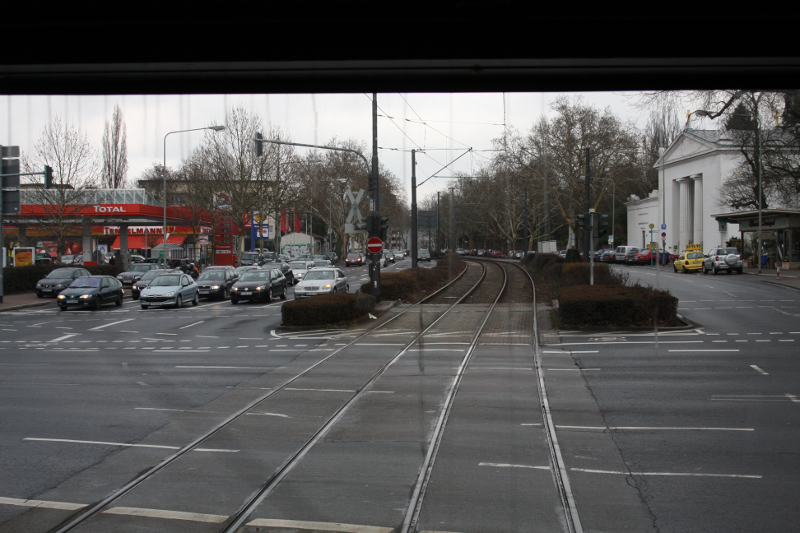
At this place, Eckenheimer Landstraße intersects Adickesallee and Nibelungenallee. We were now about to pass the Central Cemetery and the New Jewish Cemetery, both of which are located to the right of the line.
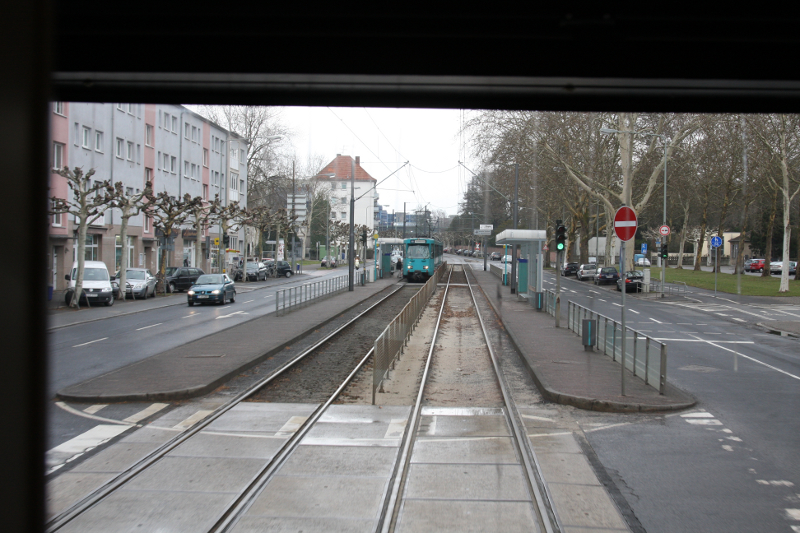
...this here being the Hauptfriedhof stop at the Central Cemetery.
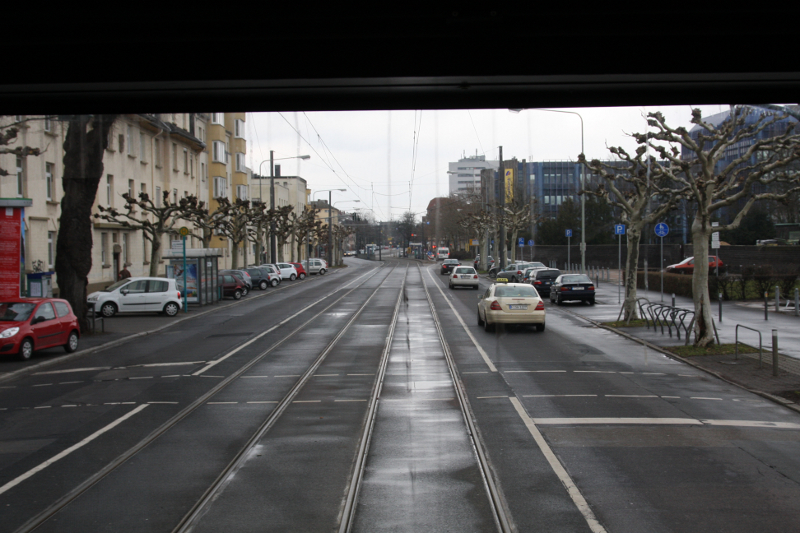
We were now approaching the intersection of Eckenheimer Landstraße and Marbachweg. Here, the U5 line branches off to the right while we were to continue ahead to the old Eckenheim depot.
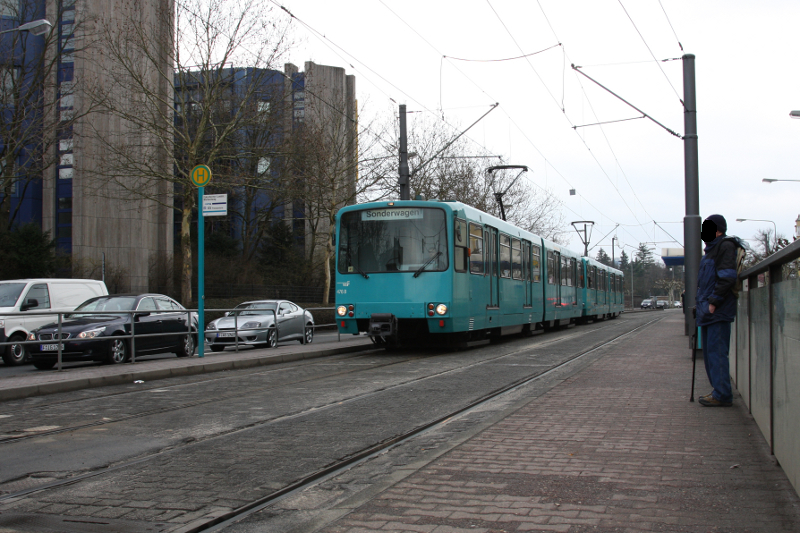
However, we first made a photo stop. This is how the U3 type LRV looks. Twenty-seven of these were delivered from 1980 onwards, with an additional order having been planned with the intention of equipping the future U6 and U7 lines. However, budgetary constraints prevented this order from ever being made. The U3 type has three bogies with two wheelsets each, with the two outer bogies being powered by one 174 kW motor each. The overall length is 25.68 metres, with the length being 2.65 metres. The type has chopper controls, allowing for smooth acceleration and braking without any notches.
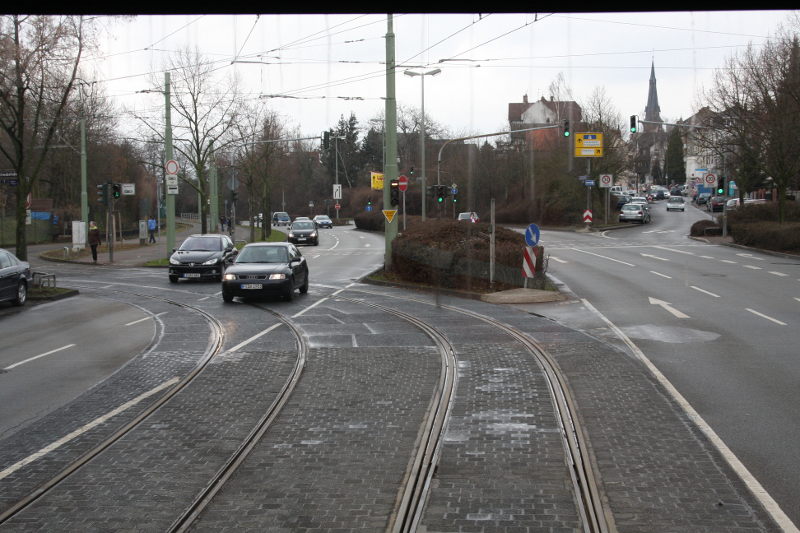
We now had to wait for the traffic to clear and the signal showing a proceed aspect as we were about to reach the Eckenheim depot at Schwabstraße.
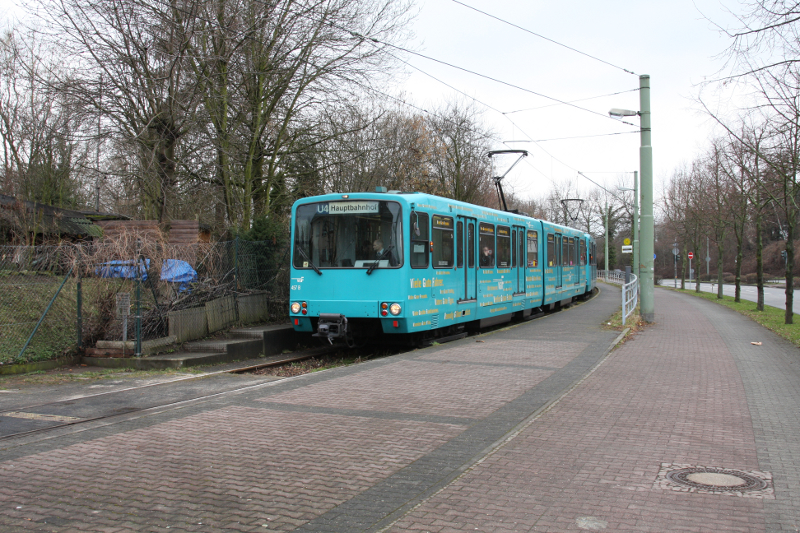
We first entered a turnback outside the actual depot and played a bit with the rollsign ![]() .
.
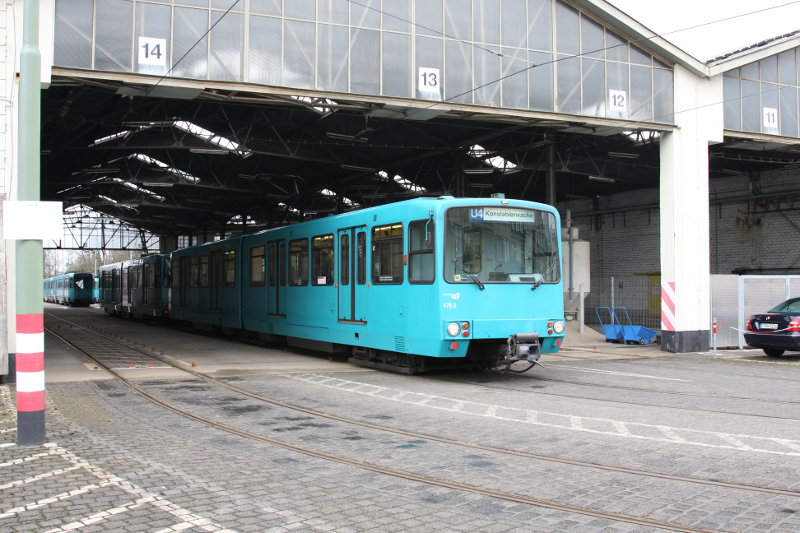
And this is our train standing in the shed at the old Eckenheim depot, which was formerly used for trams and later for storing trains for the U4 and U5 lines. Today it serves mostly as a stabling area for retired LRVs and a small number of trains for the U5 line.
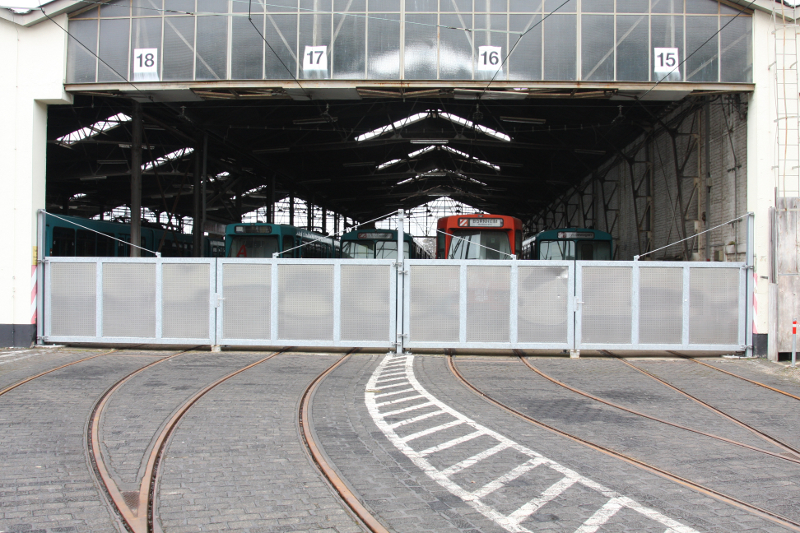
Several retired cars were stored in another part of the shed.
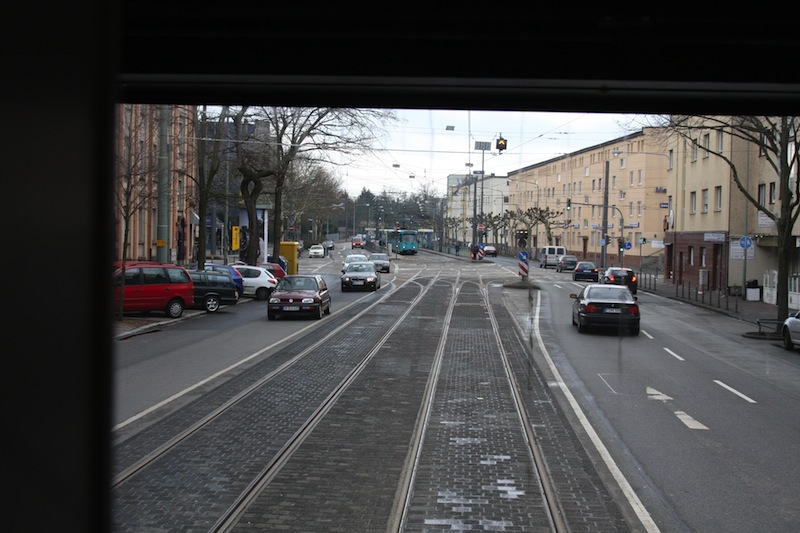
Next we were about to cross over to the "A" route, using a connecting line through Marbachweg, to the right of where I was looking here.
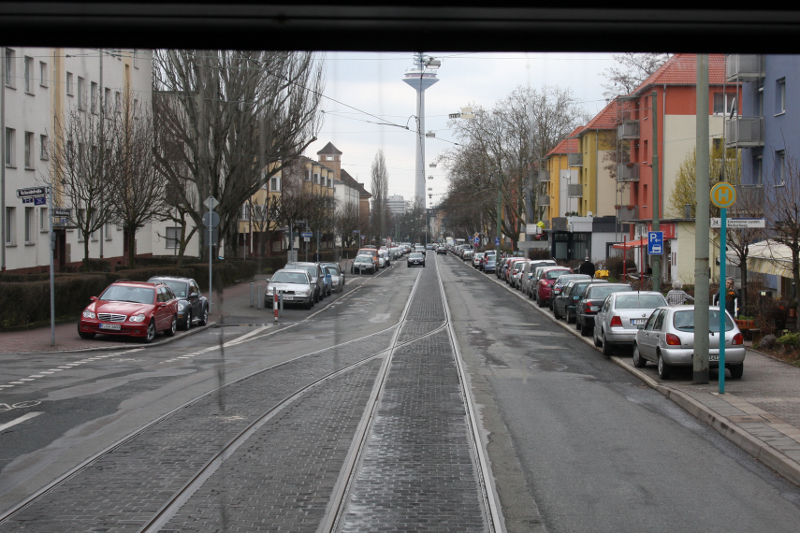
This connecting line through Marbachweg is mostly single-tracked. You could tell the motorists coming the other way were not expecting to see a rail vehicle here! ![]()
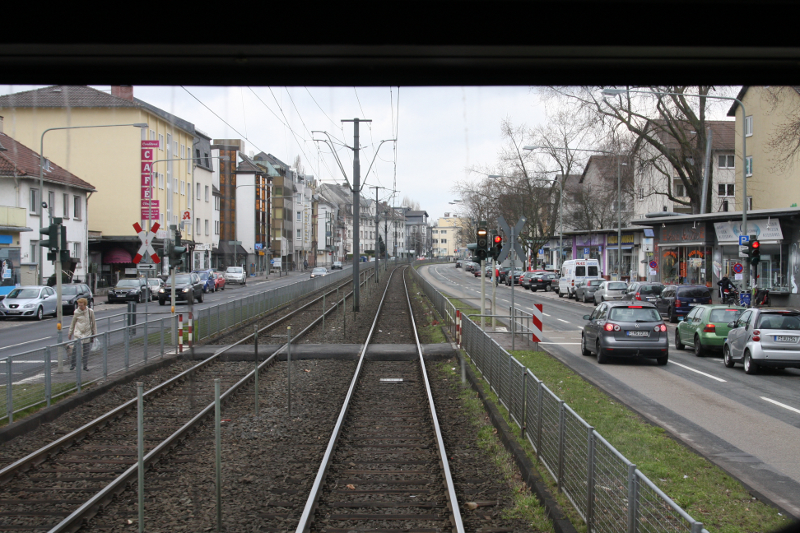
We were now on the "A" route and heading north for Heddernheim...
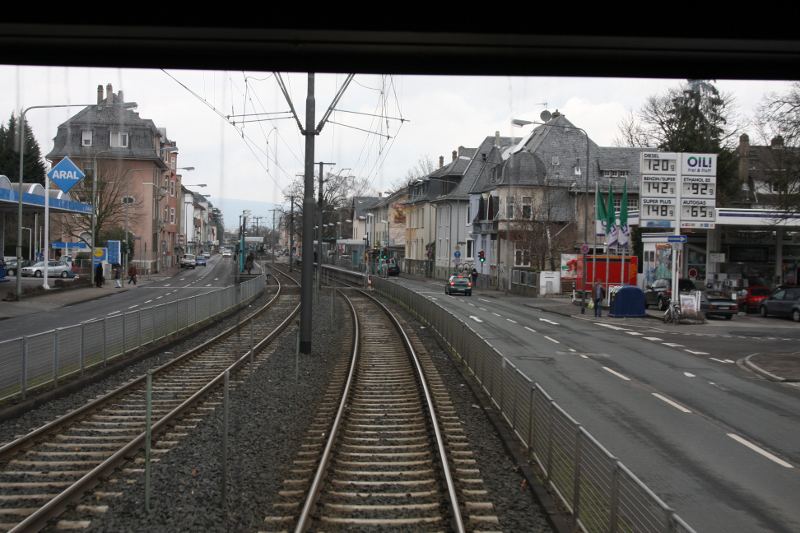
...along Eschersheimer Landstraße.
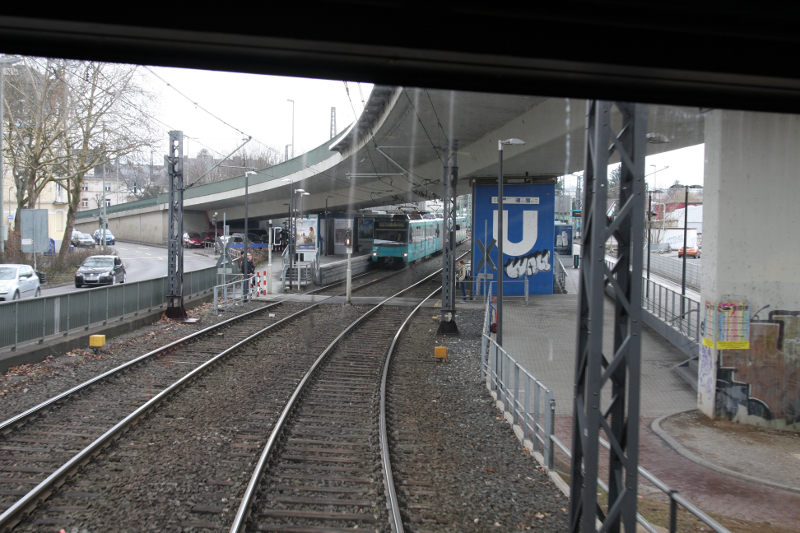
Just beyond Weißer Stein and before Heddernheim the line crosses over the Main-Weser Railway and then drops back down to the station and LRV depot. We would now continue to Bad Homburg-Gonzenheim on what is the U2 line in scheduled traffic.
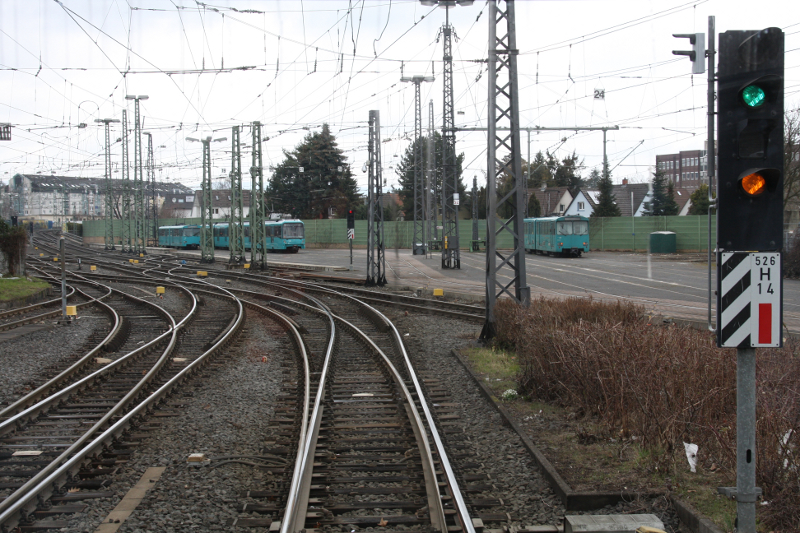
The depot serving the U1 through U3 lines is located to both sides of the line between Dillenburger Straße and An der Sandelmühle. The signal shows a Hp 2 aspect, allowing us to proceed with 40 kph.
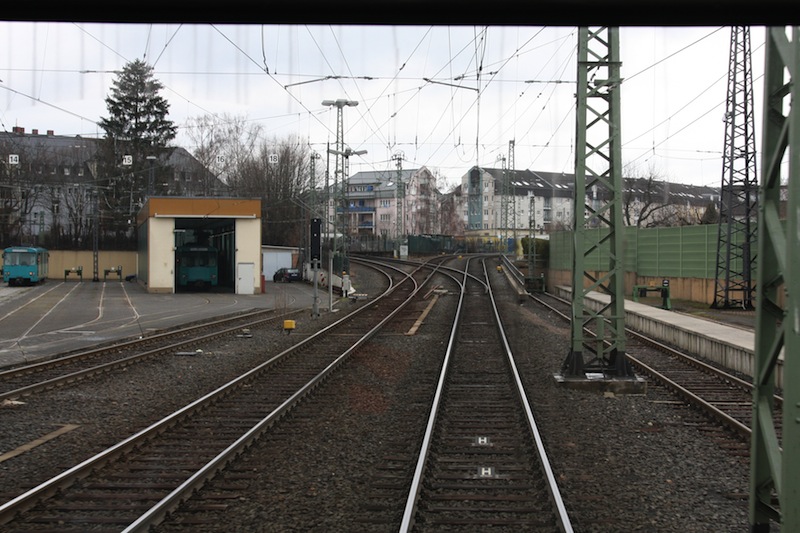
The junction in front is where the U1 and U3 lines for Ginnheim and Oberursel branch off, while the U2 line continues ahead.
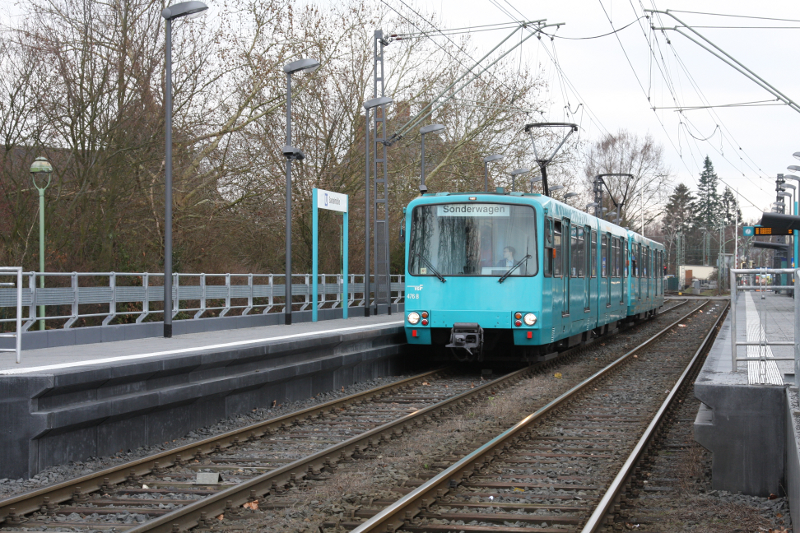
The next photo stop was at Sandelmühle...
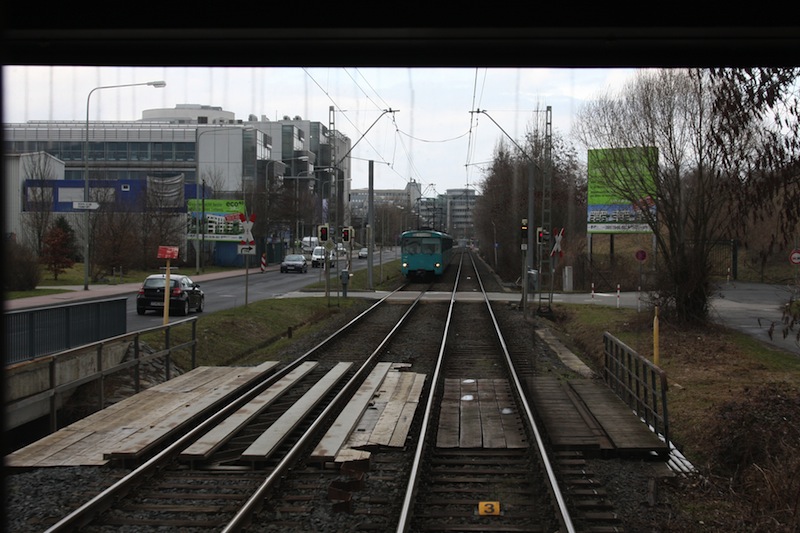
...after which a scheduled service came the other way.
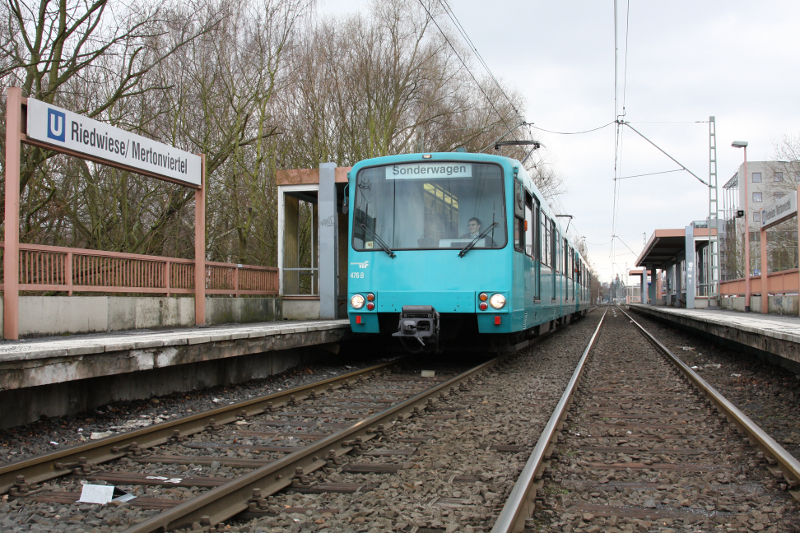
Another stop was made at Riedwiese/Mertonviertel. Not too far from here a new borough called Riedberg is currently under construction, and two new light rail lines are planned to begin operation in this area in December 2010.
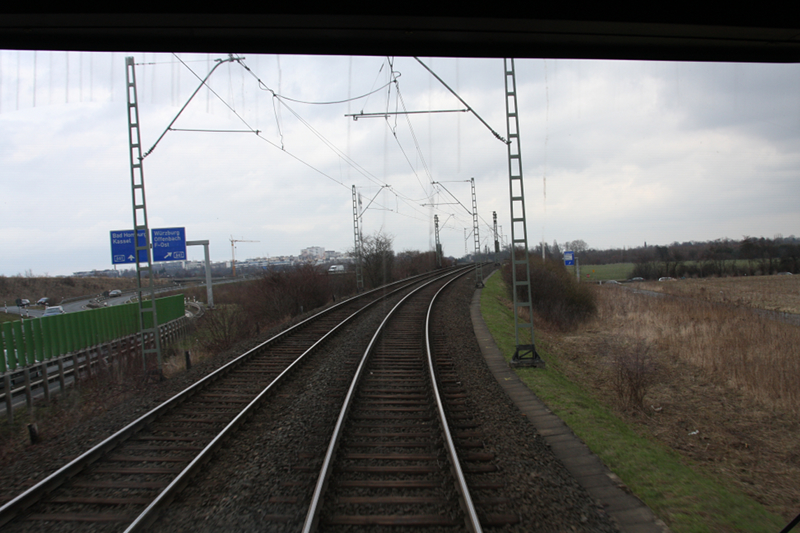
The route then continues along the A661 motorway, with the next stop being Kalbach.
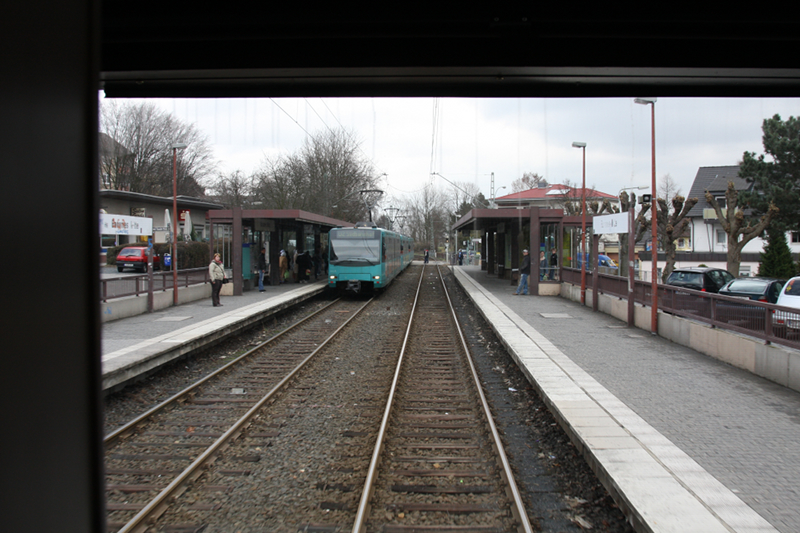
This here was Bonames Mitte...
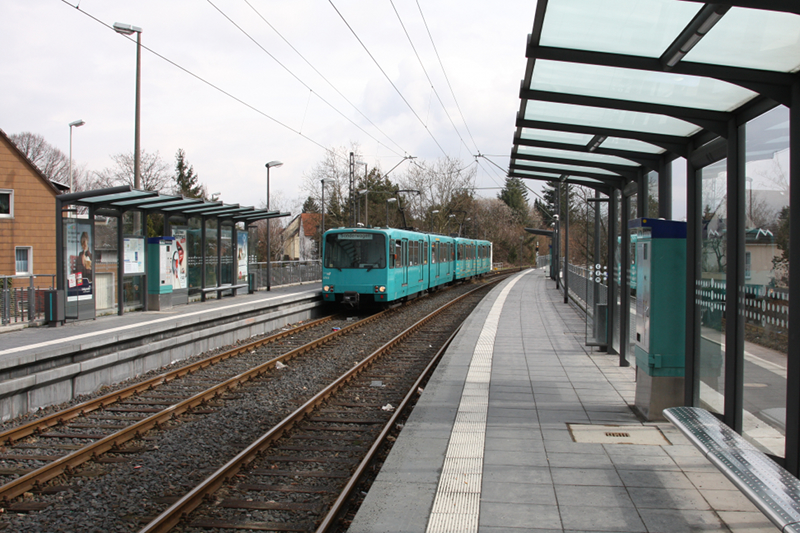
...and this is the terminus at Gonzenheim on the outskirts of Bad Homburg. The routes now operated by lines U2 and U3 were formerly something similar to what would be called an interurban railway in North America, having been operated with trams with body extensions around the doors on the right side as the cars would have been too narrow for the tunnel into the centre of Frankfurt otherwise. The line to Bad Homburg originally terminated at the city's railway station, but was cut back to Gonzenheim in 1971 after trams had begun to fall out of favour with the powers-that-be in the 1960s. Back when it was operated as a tram it was called the number 25 line, which in turn was augmented by line 23 between Bonames and Neu-Isenburg, the latter being a city to the south of Frankfurt.
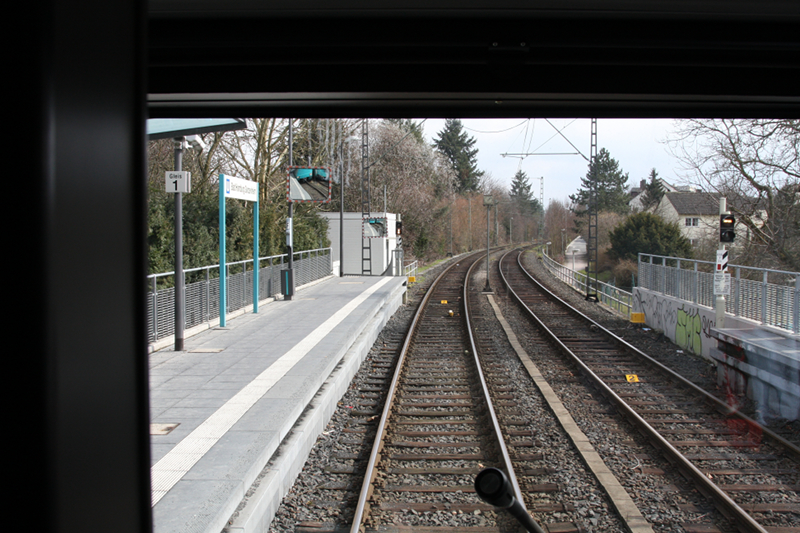
Preparing to head back to Heddernheim...
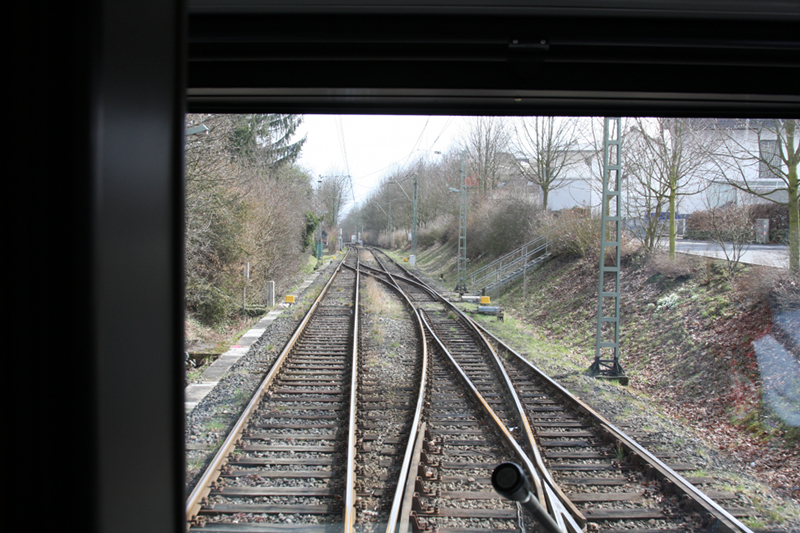
...and crossing back over to the right hand track after leaving the station.
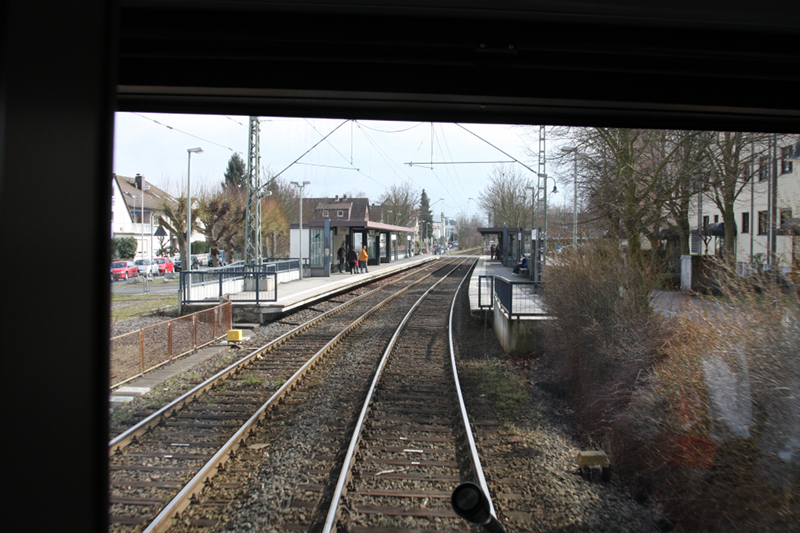
Going through Ober-Eschbach...
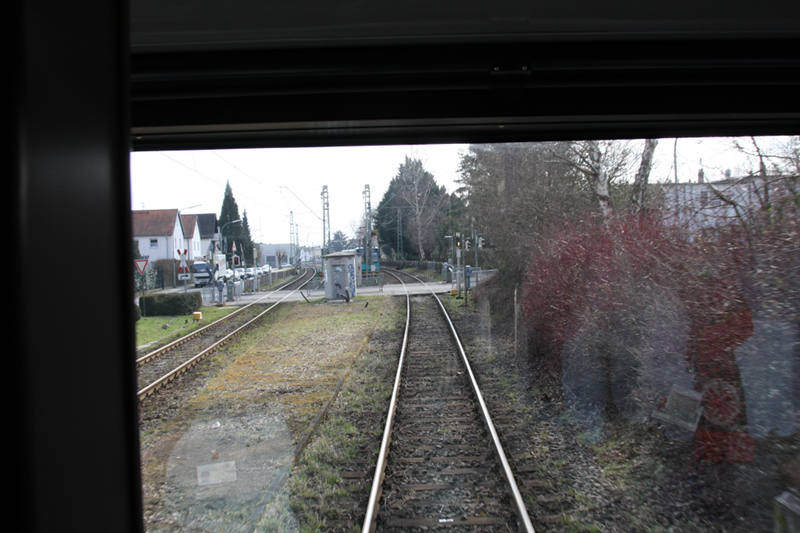
...and Nieder-Eschbach where there is a turnback for U2 booster services for peak traffic.
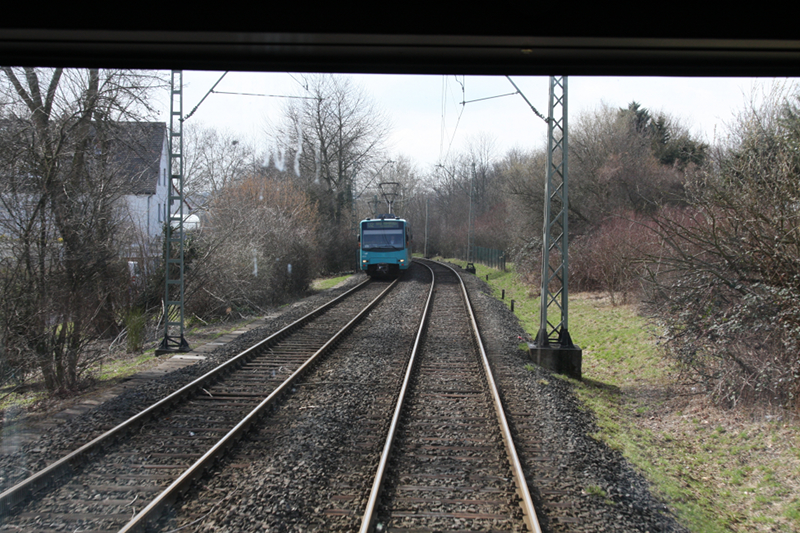
En route to Heddernheim...
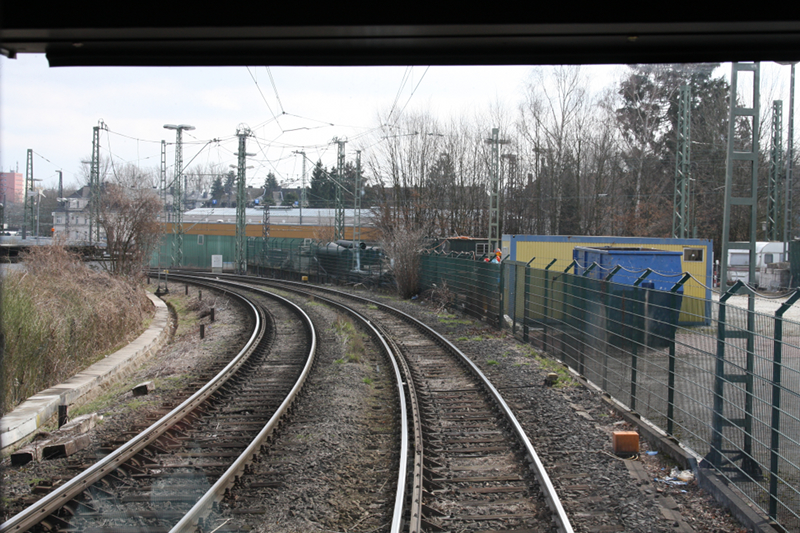
...now visible in the background...
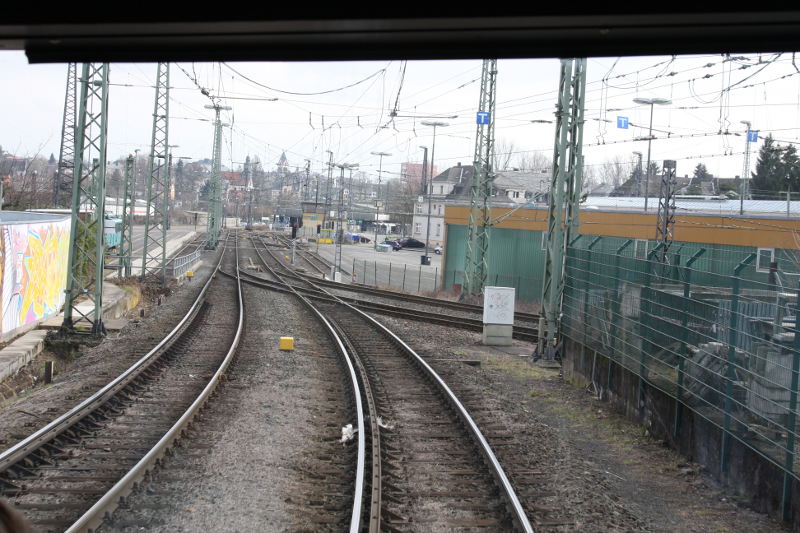
...and entering the depot/station area.
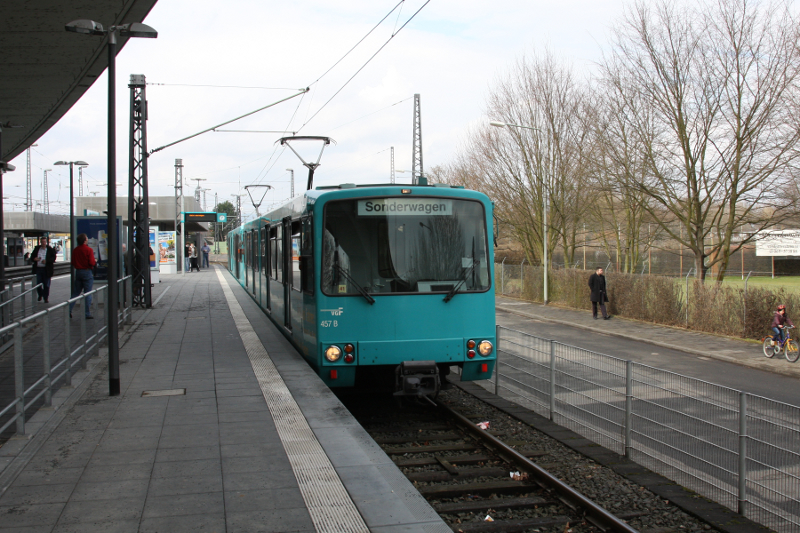
We now reversed direction on platform 3 and prepared for our next leg to Oberursel.
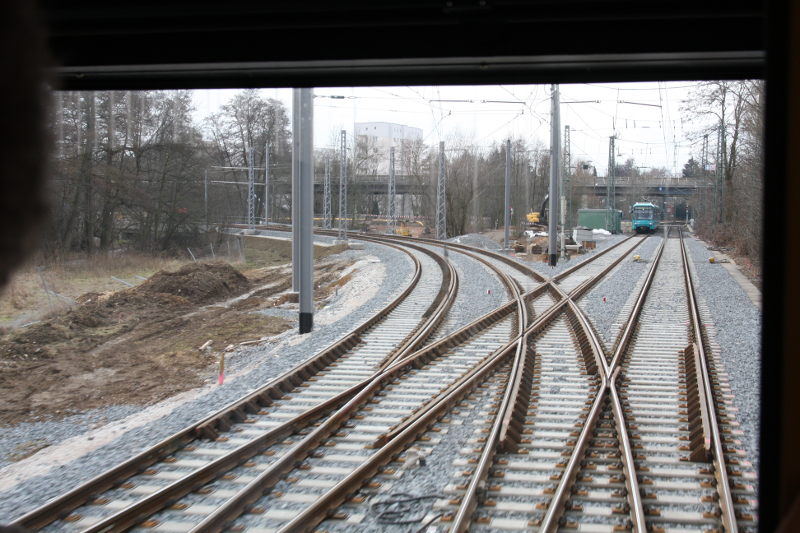
This junction here is where the U1 line splits off to Ginnheim on the left, with the U3 line continuing ahead. The junction has recently been rebuilt in anticipation of the new lines U8 and U9 which are planned to enter service in December 2010, operating between Southern Station and Riedberg and Ginnheim and Gonzenheim respectively.
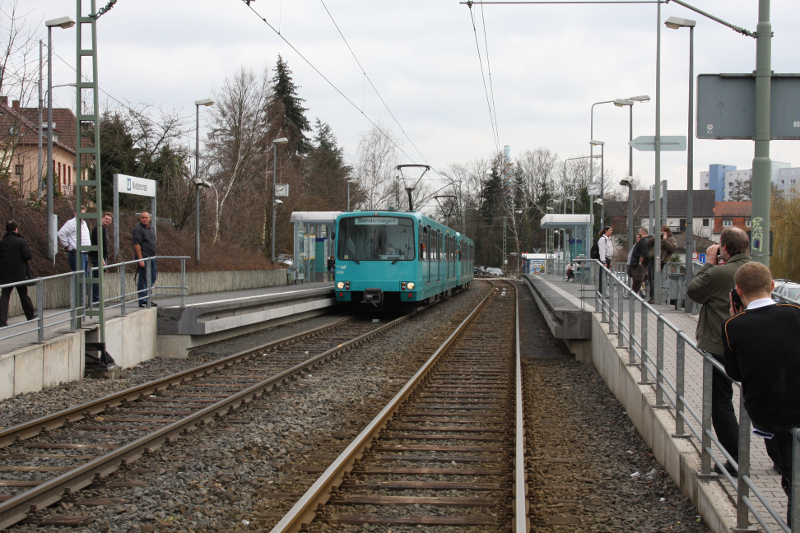
I wonder what the passengers were thinking about us railfans! ![]() This here was Niederursel.
This here was Niederursel.
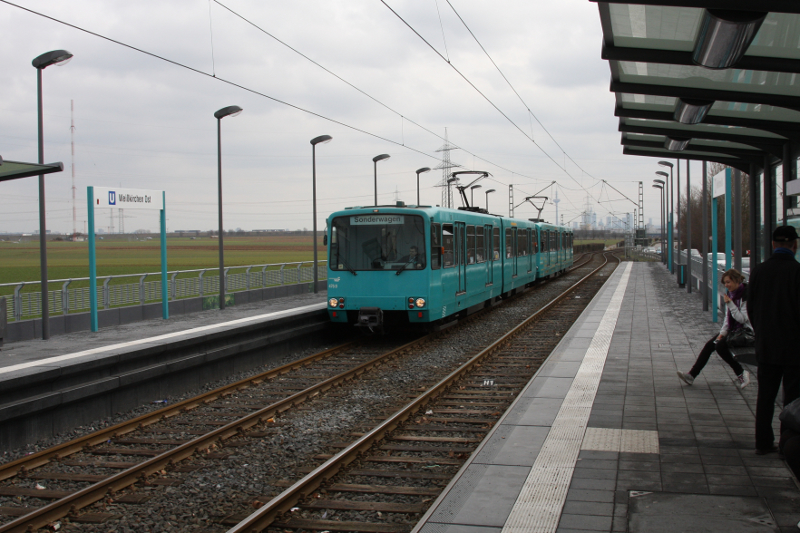
The line to Oberursel was known as line 24 back in the tram days. Here, we were calling at Weißkirchen-Ost, on the outskirts of Oberursel.
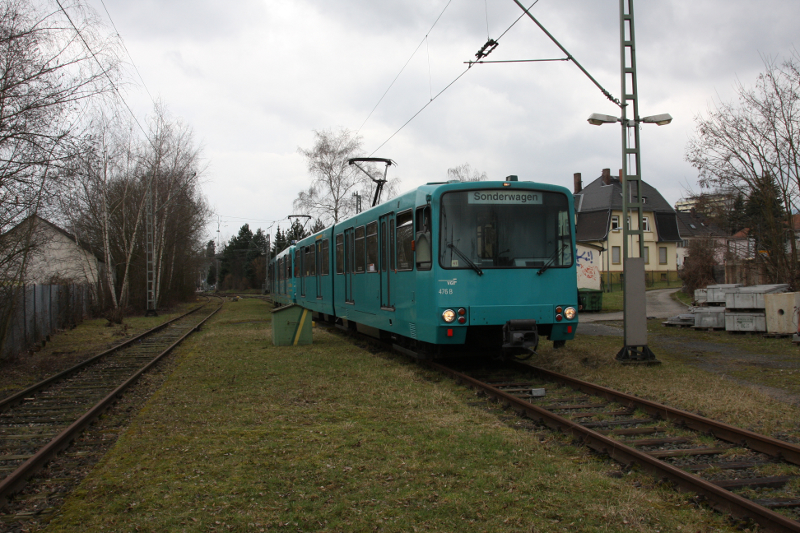
The line to Oberursel also saw loco-hauled goods traffic up until the 1980s, with the former goods yard just beyond Oberursel Railway Station still giving an idea of those times. Today, this area is used as a turnback for U3 booster services.
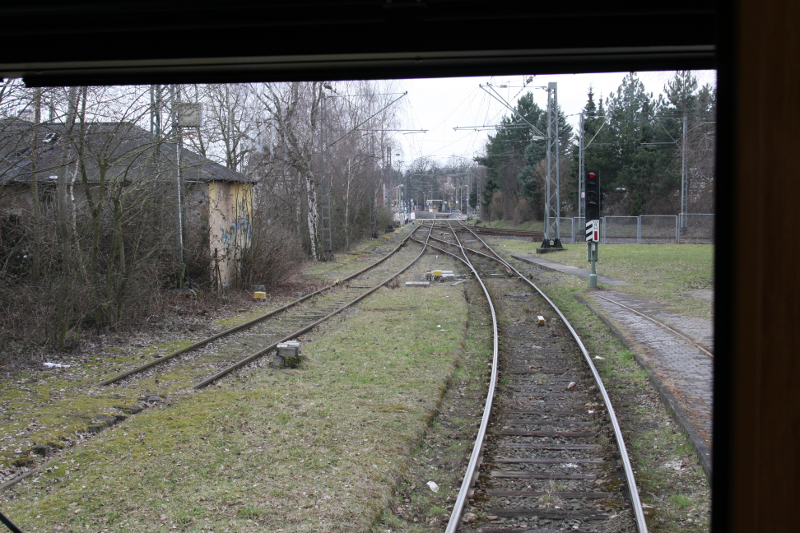
Looking ahead to the station. We then headed to the Bommersheim stabling area where lunch was waiting for us ![]() .
.
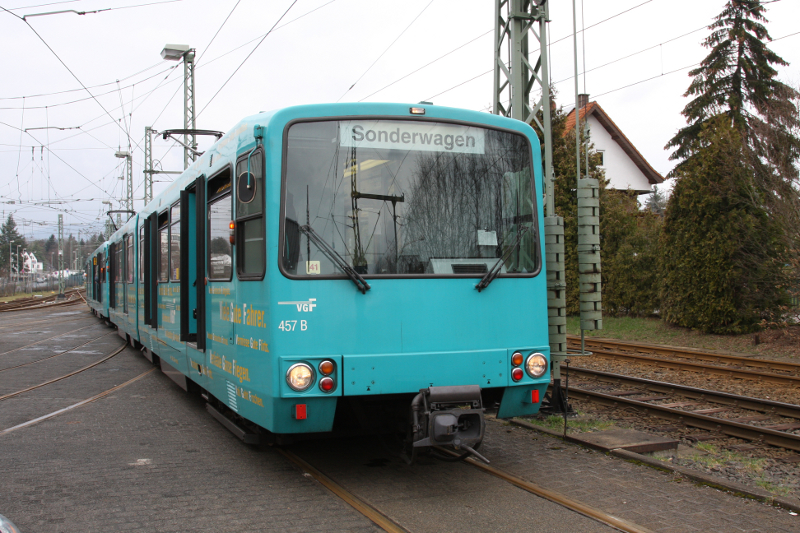
No stairs anywhere, guys! ![]() Lunch was served from the boot of the car of one of the tram association's members.
Lunch was served from the boot of the car of one of the tram association's members.
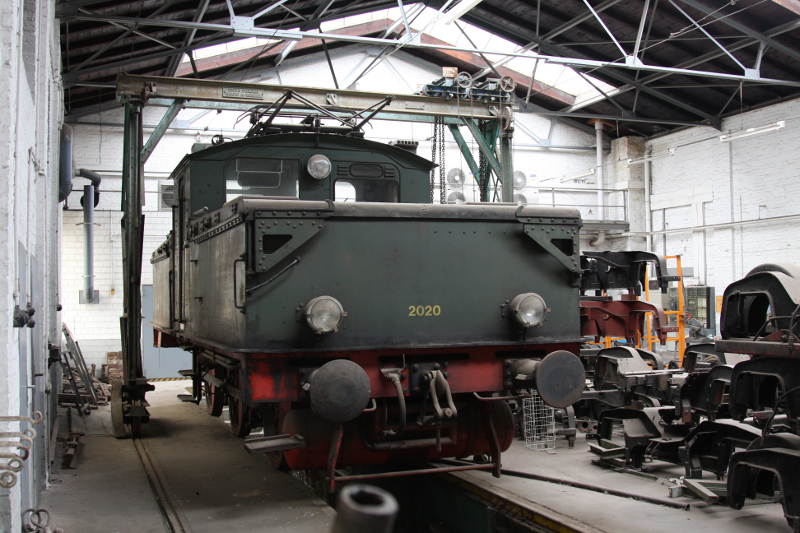
Engine 2020, now stabled inside the Bommersheim shed, was one of those which handled goods traffic on this line. Next to it, a bunch of disused bogie frames are stored.
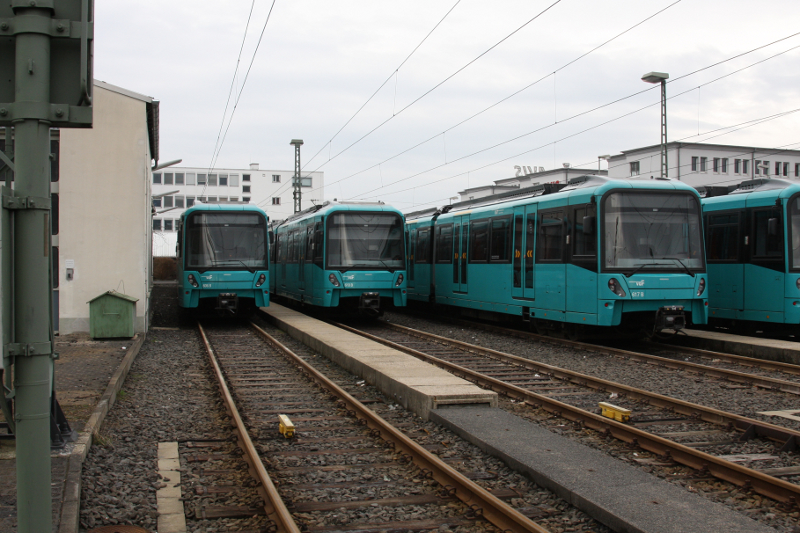
The stabling area is under CCTV surveillance and fenced, which reduces the risk of vandalism for those trains which are stabled there for use on the U3 line. These here are several of the new U5 type LRVs.
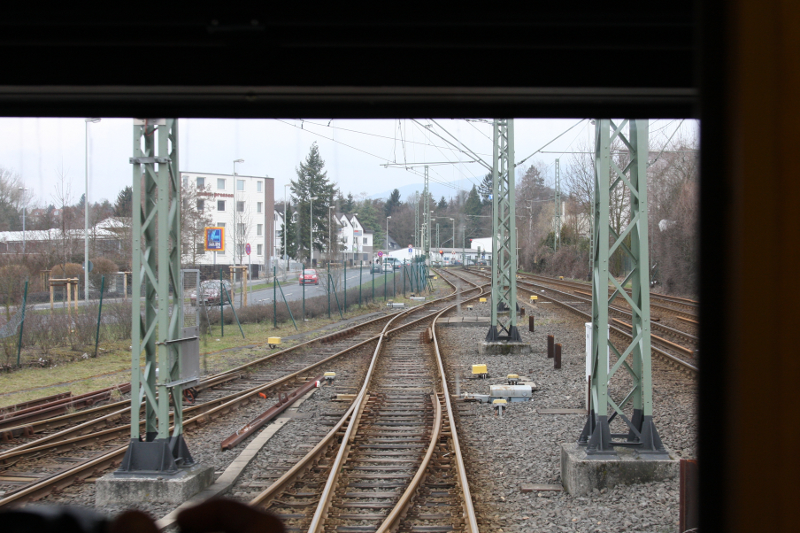
We were now about to head up to Hohemark, which is the northern terminus of the U3 line, near the edge of the city.
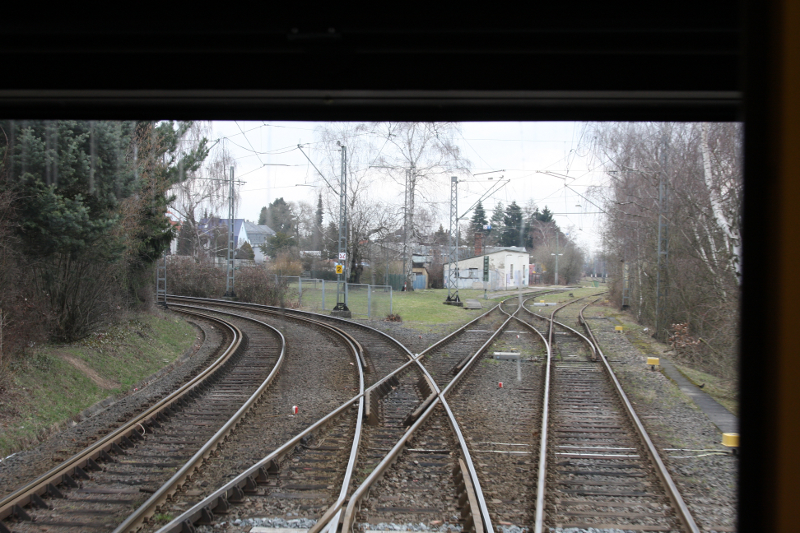
The old goods yard is located ahead, but we were turning left to head through the centre of Oberursel.
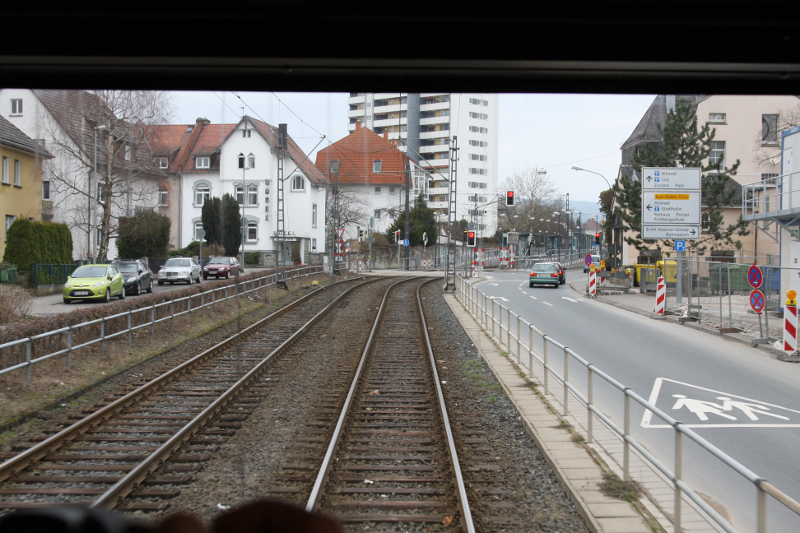
The U3 line can be operated only with two-car trains at this time as the platforms at the stops within Oberursel were originally built shorter than those in Frankfurt. However, they are currently being rebuilt to allow three-car trains.
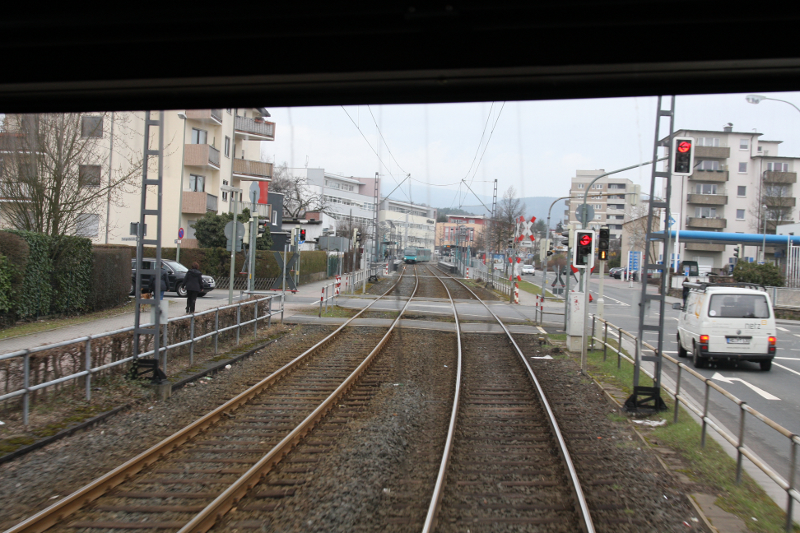
Portstraße is located dead ahead...
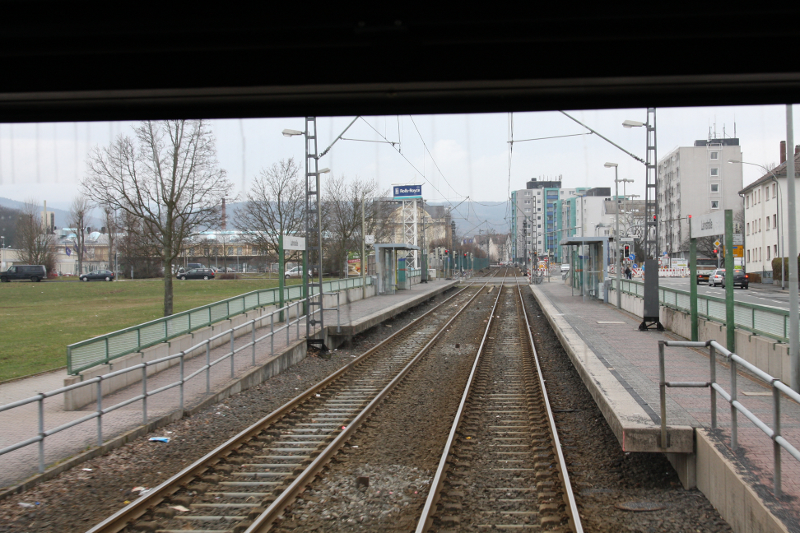
...and this is Lahnstraße. In the background you can see the Rolls-Royce aviation engine plant on the grounds of what once was the Oberursel Motor Works back around World War I.
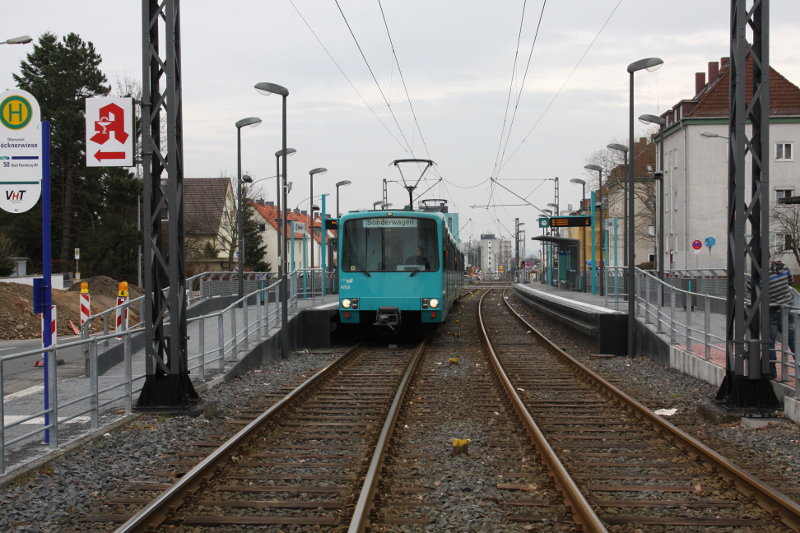
Head-on view of our train at Glöcknerwiese, taken from the pedestrian crossing.
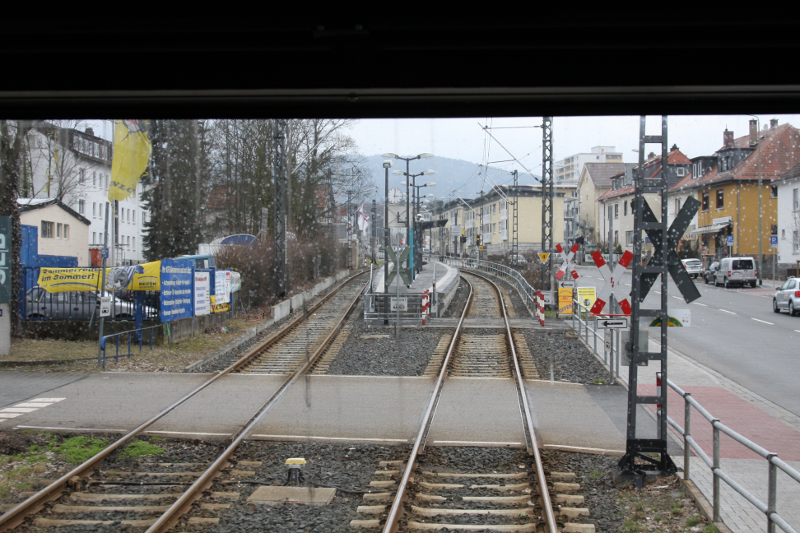
Approaching Kupferhammer, which is the last stop before the single-tracked section.
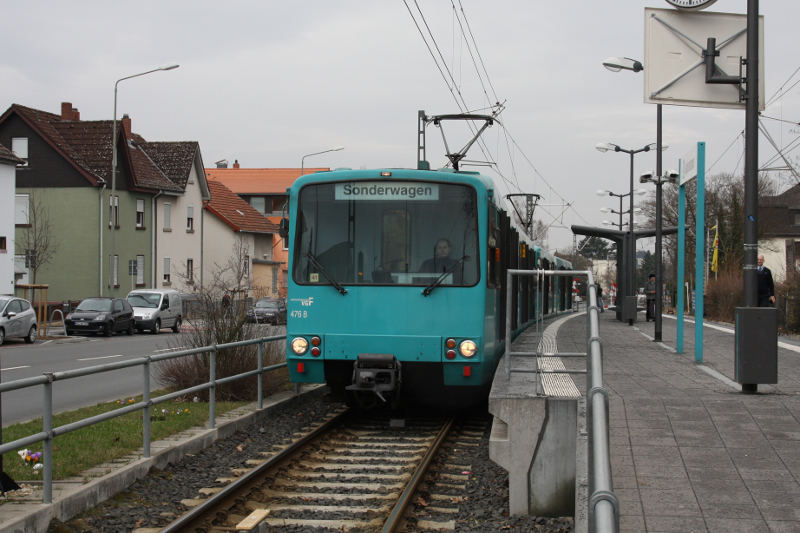
Here we had to wait for the next down service to clear the single-tracked section...
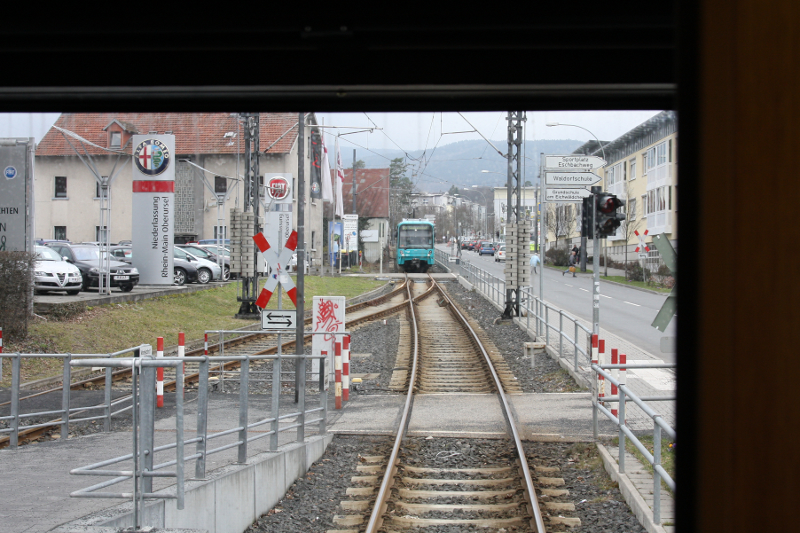
...which it eventually did.
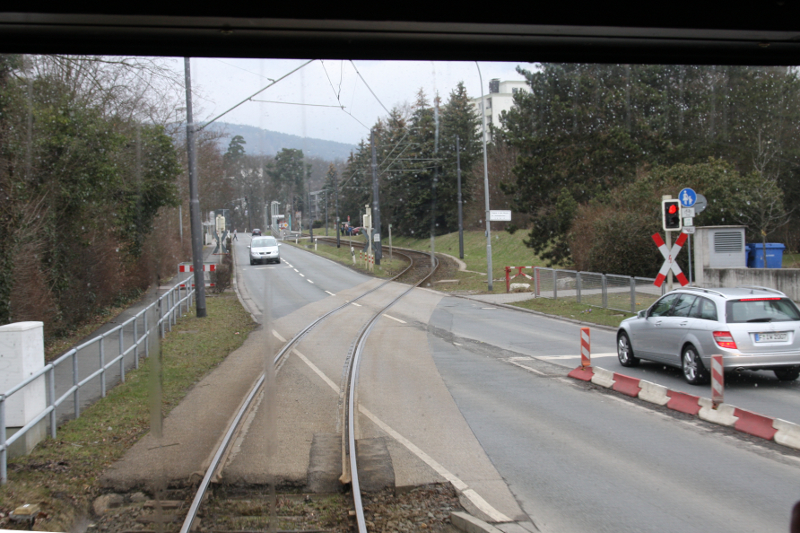
Switching to the other side of Hohemarkstraße...
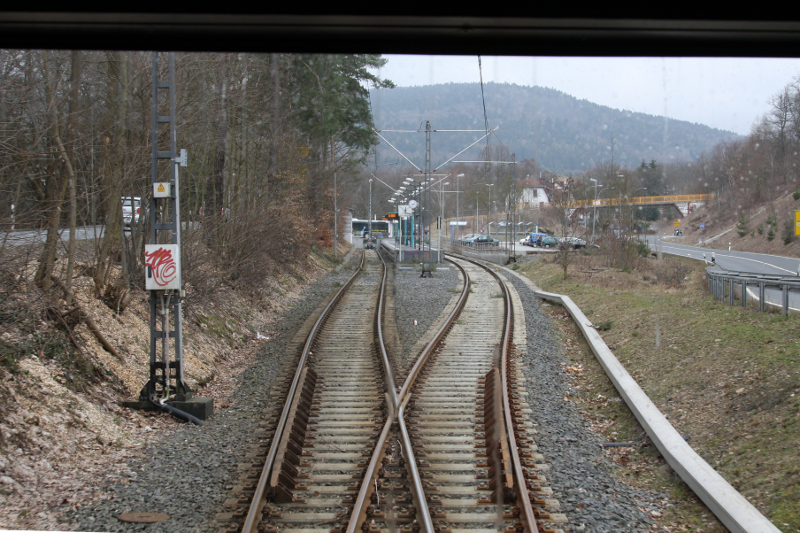
...and there we were. Back in the tram days there used to be a reversing loop beyond the location of what is the Hohemark terminus today.
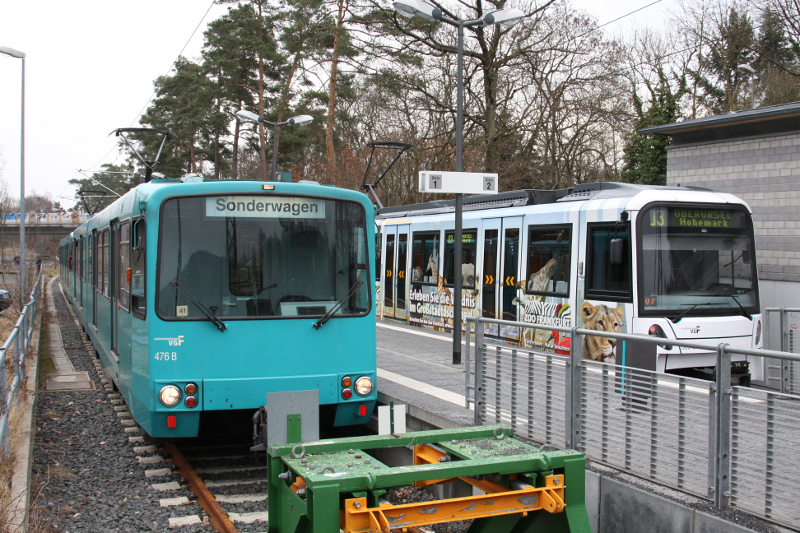
Impression of some 28 years of development standing side by side - our pair of U3 cars to the left and a pair of U5 cars to the right. Hohemark is a good starting point for hiking or cycling up to the Feldberg, by the way!
Well - this concludes the first part of this report. The second part will cover the three remaining legs - back to Heddernheim, then on to Ginnheim and Heerstraße, and back to Schäfflestraße where our excursion started ![]() .
.



2 Comments
Recommended Comments
Create an account or sign in to comment
You need to be a member in order to leave a comment
Create an account
Sign up for a new account in our community. It's easy!
Register a new accountSign in
Already have an account? Sign in here.
Sign In Now